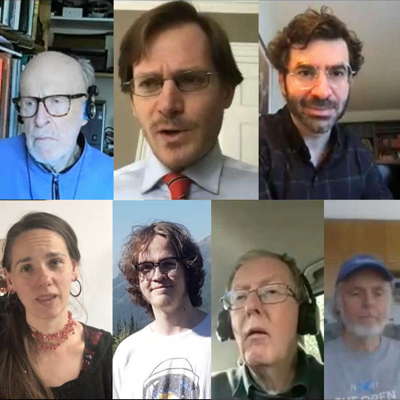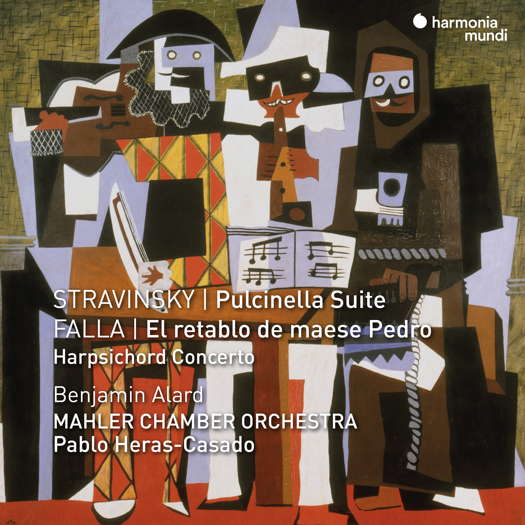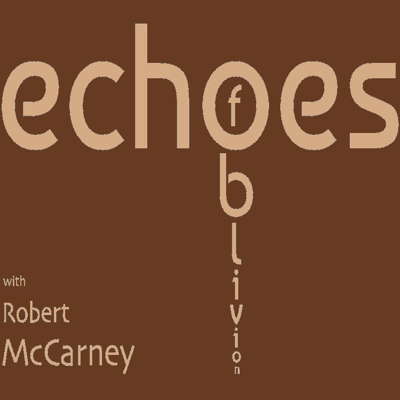 VIDEO PODCAST: John Dante Prevedini leads a discussion about Classical Music and Artificial Intelligence, including contributions from George Coulouris, Michael Stephen Brown, April Fredrick, Adrian Rumson and David Rain.
VIDEO PODCAST: John Dante Prevedini leads a discussion about Classical Music and Artificial Intelligence, including contributions from George Coulouris, Michael Stephen Brown, April Fredrick, Adrian Rumson and David Rain.

Highly Imaginative
GERALD FENECH warmly recommends music by Manuel de Falla and Igor Stravinsky
'... an absolute joy.'
During the twentieth century no composer was more involved with dance than Igor Stravinsky (1882-1971). He composed at least twelve scores specifically for ballet production, and choreographers have also found his non-theatre pieces hugely alluring and have utilized a considerable number of them for dances. The main inspiration and mover of all this Stravinskian dance activity was Serge Diaghilev, the Russian impresario for whom the composer wrote his early (1910-13) trio of ballet triumphs: The Firebird, Petrushka and The Rite of Spring.
With the onset of World War I practically all musical activity came to a halt, but when hostilities ended in 1918 Diaghilev soon reassembled his company and started searching for a proper project with which to lure Stravinsky back to ballet. The impresario came up with the idea of using the music of Pergolesi but as manipulated by Stravinsky. At first the composer was cool to this suggestion, but he was eventually won over as he read through the many scores by the eighteenth century Italian master that Diaghilev had put together.
What Stravinsky did not know was that most of these pieces were not authentic Pergolesi works. The task of selecting the music and a scenario was relatively easy. Stravinsky chose various pieces attributed to Pergolesi, and from an old manuscript he took a comic episode whose leading character was Pulcinella, the traditional hero of Neapolitan commedia dell'arte. The plot fitted Stravinsky's sophisticated natural wit to perfection and he wrote music as colourful as the storyline itself.
Listen — Stravinsky: Scherzino - Allegro - Andantino (Pulcinella)
(HMM 902653 track 16, 0:00-0:59) ℗ 2024 Harmonia Mundi Musique sas:
Plot: Pulcinella, sought after by all the girls, is in danger of being killed by their boyfriends. Changing places with his double, who then only pretends to be slain, Pulcinella escapes harm. The would-be assassins disguise themselves as Pulcinella and go to visit their respective lovers. Pulcinella, as if risen back to life, appears. Becoming a kind and generous benefactor, he arranges marriages for the couples and himself weds Pimpinella.
Maintaining most of the original tunes and basses, Stravinsky 'touches up the music' with added notes and ostinati, which provide harmonic pungence and rhythmic tautness. He subtly adjusts the phrases, breaking up the formal symmetry, and he colours with an orchestration of characteristic elan and transparency.
Listen — Stravinsky: Minuetto. Molto moderato (Pulcinella)
(HMM 902653 track 21, 0:57-1:39) ℗ 2024 Harmonia Mundi Musique sas:
The ballet was premiered in Paris on 15 May 1920 with choreography by the famous Leonid Massine, who also danced the title role. Sets and costumes were by none other than Pablo Picasso, and all these factors contributed immensely to the work's success. The concert suite, consisting of eleven movements of the ballet's eighteen, was put together in 1922.
In 1923 the premiere of the masterly 1922 puppet opera El retablo de maese Pedro (Master Peter's Puppet Show) by Manuel de Falla (1876-1946) took place at the Palace of Princess Polignac in Paris and the audience, which included poets, musicians and painters such as Stravinsky, Picasso and Jose Maria Sert, gave the composer a hugely rousing reception. Uniting the magical world of opera with puppet theatre, this one-act opera tells the story of one of the most exciting and humorous episodes in Cervantes's classic book Don Quixote.
A travelling showman arrives at the inn where Don Quixote and Sancho Panza are resting and puts on a show with his puppet theatre, enacting the tale of the rescue of a Spanish princess from Moorish captivity by a Knight from Charlemagne's court. The narrator tells the story with such convincing involvement that, during the final pursuit of the escaping couple, Don Quixote himself launches into the attack on the puppet pursuers, cutting them to pieces.
Listen — Falla: Final (El retablo de maese Pedro)
(HMM 902653 track 10, 3:40-4:38) ℗ 2024 Harmonia Mundi Musique sas:
The score of this quite unique musical invention is written for a small orchestra and three soloists and shows the composer embarking on a change of direction from his earlier works. The music abandoned the then popular Andalusian tastes of the time in favour of the medieval and Renaissance styles relevant of twentieth century neoclassicism. The use of the then unfamiliar sound of the harpsichord was a stroke of genius, creating a unique, virtuosic sound of a great richness.
The blend of music and words is one of the greatest achievements of the piece, with the Spanish language finding genuine musical expression. Composer Joseph Horowitz described it best:
The work is surprisingly theatrical. It bristles with wit and limitless panache. It percolates with such subtle details as Don Quixote's long and ungainly legs - the only part of him which remains visible once Master Peter's production begins.
De Falla wrote his harpsichord concerto for Wanda Landowska, the pioneering Polish-French harpsichordist who had played the instrument for him in El Retablo de maese Pedro. Landowska gave the premiere in November 1926 in Barcelona with the composer conducting, but due to insufficient rehearsal time and error-ridden parts that were hastily prepared, the occasion was a complete disaster. Indeed, shaken by this experience, Landowska never performed the piece again, and de Falla himself was often constrained to perform the part himself.
A troubled premiere was perhaps expected, for this was unusual radical music. Written for six solo instruments, the composer departed from the classic concerto form of a soloist accompanied by an orchestra, and instead opted for an austere and stripped-down style which was similar to those of his contemporaries Stravinsky and Schoenberg.
The vigorous, spiky first movement is built on fragments of 'De los alamos, vengo madre', a Castillian folk tune used in sixteenth century villancico by Juan Vasquez. The richly beguiling second movement is slow, but marked 'jubilant and energetic'. It is based on a sacred hymn 'Tantum ergo' by Tomas Luis de Victoria, and suggests the grand religious processions of festival days in Spain. The witty finale is based on 'De los Alamos' and is cast in the style of Domenico Scarlatti.
Listen — Falla: Vivace (Harpsichord Concerto)
(HMM 902653 track 13, 3:07-4:05) ℗ 2024 Harmonia Mundi Musique sas:
This exciting album might not be everybody's cup of tea, but the music-making has a certain charm and beauty that draws the listener completely in and the evoking of the commedia dell'arte and picaresque Spain is unerringly convincing. Pablo Heras-Casado's conducting is wholeheartedly involving yet consistently generous and full of warmth, and singers and players respond with performances that are alive and transparent, revealing all the minute details of these scores with unabashed clarity.
Benjamin Alard, playing a sumptuous Pleyel harpsichord, is indeed supreme, and his rendition of the solo part is a unique invitation to an exhilarating firework display.
A highly imaginative pairing of two different sound worlds that are at the forefront of the twentieth century's pioneering musical trends. Sonics and presentation are an absolute joy. Warmly recommended, especially to those who like to experience the occasional discovery.
Copyright © 19 March 2024
Gerald Fenech,
Gzira, Malta




